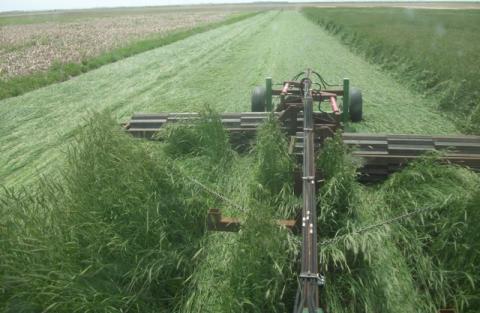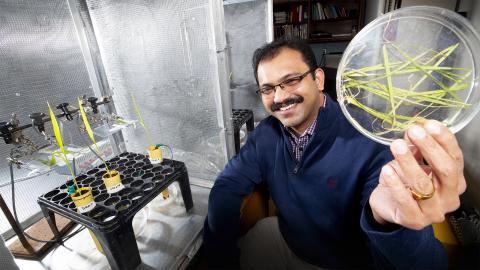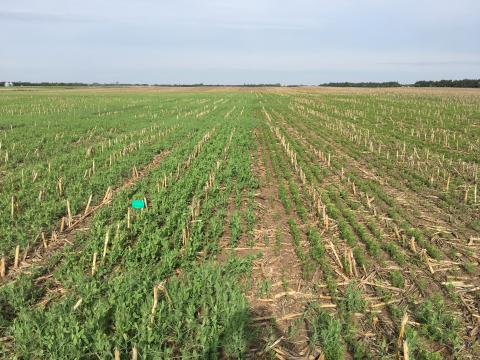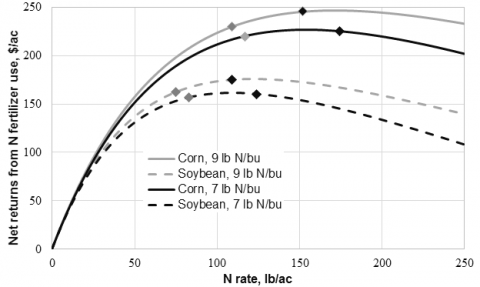A Roller-Crimper for Cover Crop Termination and Weed Suppression
March 7, 2019
Following unsatisfactory crimping results with a commercial crimper, in 2016 researchers built a crimper with a unique design with two gangs that pull at an angle to the direction of travel. View research results from field tests with the new crimper.
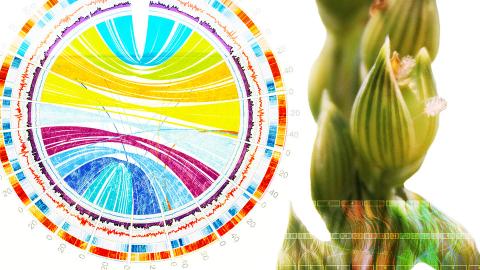
Sequencing of Proso Millet Genome Could Raise Yields, Expand Production Range
March 4, 2019
Researchers have now sequenced and mapped the genome of proso millet – a feat essential to raising yields of the drought-resistant crop in the Nebraska Panhandle and semiarid regions where population booms foreshadow food shortages.
Experiments Underscore Overlooked Aspect of Defending Corn from Pest
March 4, 2019
Spraying a corn plant with one of its own compounds — 12-oxo-phytodienoic acid, or OPDA — can help deter the virus-carrying, pollination-disrupting insect known as the corn-leaf aphid.
Research Examines Water Balance of Field Peas, Chickpeas and Soybeans vs Fallow
February 21, 2019
This research compared fallow to field peas, chickpeas, and soybeans in terms of water balance, impact on next year’s wheat crop, and profitability. It was conducted near Grant in western Nebraska.
Genes to Proteins: Enriching the Nutritional Value of Popcorn, Sorghum
February 21, 2019
After years of research a University of Nebraska-Lincoln team led by David Holding has roughly doubled the content of lysine, an essential amino acid, in both popcorn and sorghum. For sorghum it could mean a more complete source of nutrition for many in the developing world.
Effects on Profitability and Nitrogen Loss from Reducing N Rate for Corn
February 5, 2019
This study looks at how various reductions in nitrogen application rates in corn might reduce nitrogen loss to the environment and what the costs of those changes would be in yield and profit.
Corn Growth and Development: Updating an Old Paradigm of Dry Matter and Nutrient Accumulation and Partitioning
January 23, 2019
From the 1960s to the 2000s corn hybrids have changed dramatically in appearance and yield. Nutrient content, concentrations and partitioning also have changed and are the focus of this article for the Nebraska Crop Management Conference Jan. 28-29.
Corn Growth and Development: What We Have Learned About Corn Development From Studying Ear Issues
January 23, 2019
In an effort to better understand the causal agents of ear formation issues first seen in corn in 2016-2017, researchers laid out an experiment in 2018 to typify types of ear formation damage as well as possible factors contributing to damage.
